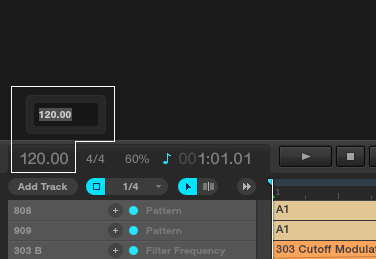

It is now also accessible by selecting the Menu icon in the top left corner of the screen and then tapping Looper. The looper has a dedicated footswitch all the way to the right on the top row just like the Pedalboard.

After recording, my loops are coming in quieter.Setting up the Looper to Sync to a Midi Clock.The following guide will walk you through setup, new functions and a few troubleshooting steps to take if something isn't working right. The Headrush Prime's looper has become a very powerful tool, incorporating a few new tricks from the Looperboard and refining them for its own needs. We’ve used MIDI cables and interfaces to connect the black boxes that clutter our workspaces, and we’ve used ReWire to connect the DAWs that clutter our computer desktops, with varying levels of complexity and reliability.įor any musician or producer running a lot of digital gear side-by-side, synchronisation has always been an issue – an inconvenient necessity.Solution home Headrush Support HeadRush Prime Headrush Prime | Looper Setup and Troubleshooting With Live 9.6, Ableton introduced Link, a sync solution that works via WiFi or Ethernet. Link is reliable, and super-easy to understand and to configure. Over time, it’s appeared on ever more software, from Bitwig Studio on macOS/Windows, to Korg Gadget on iOS, while also encroaching into the ‘real world’ through Akai’s new Force hardware.
#AUGUSTUS LOOP TEMPO CHANGE SYNC INSTALL#
No extra purchase or install is required, and that’s a crucial aspect of what’s made it popular.
#AUGUSTUS LOOP TEMPO CHANGE SYNC SOFTWARE#
The great thing about using Link is that you probably won’t need to add any more software or apps to try it, because it’s included with so many. If you really get stuck, find an iOS/Android app, or grab the Live demo or VCV Rack (an open-source virtual modular synthesizer) and put them on another computer. Come to think of it, you could even Link VCV Rack to Live on the same computer.Īs we point out in the walkthrough, it’s often better to rely on Ethernet for an important gig, but that’s usually down to the up and down nature of WiFi rather than any reservations about Link itself. Since Live 10 added the ‘Start Stop Sync’ option in Preferences, Link’s been adopted by even more musicians – that was one feature many of us requested – the ability to start and stop all our sync’d gear at once.

It’s good to have the option to turn it on or off, though. One of Link’s strengths is that there’s no longer a sync master/slave relationship, which is always something to deal with if you’re using ReWire, where it’s impossible for the software to exit the setup without everything else falling over at the same time. With Link, however, it’s very democratic.

Anybody can start, stop, join, leave, change tempo… and it just keeps rolling. In the walkthrough, we refer to a very specific setup, consisting of Ableton Live 10, Akai Force and Arturia DrumBrute, but that’s purely because of what we had to hand at the time. The Force was the first hardware piece I’ve encountered with built-in WiFi and Link support it also has MIDI and CV/Gate, so it’s perfect for testing such setups.


 0 kommentar(er)
0 kommentar(er)
